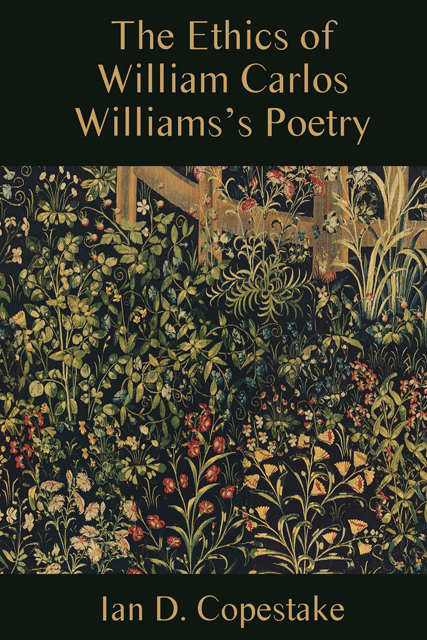Book contents
- Frontmatter
- Contents
- Acknowledgments
- List of Abbreviations
- Introduction
- 1 The Basis of Williams’s Faith in Art
- 2 Williams among the Pre-Raphaelites
- 3 A Pragmatic Approach: Williams and Emerson
- 4 Making a Start Out of Particulars: Paterson’s “Redeeming Language”
- 5 The Struggle to Believe: Williams’s Poetry of Service, Work, and Self
- Conclusion: Williams’s “Lifetime of Careful Listening”
- Bibliography
- Index
- Miscellaneous Endmatter
2 - Williams among the Pre-Raphaelites
Published online by Cambridge University Press: 16 February 2023
- Frontmatter
- Contents
- Acknowledgments
- List of Abbreviations
- Introduction
- 1 The Basis of Williams’s Faith in Art
- 2 Williams among the Pre-Raphaelites
- 3 A Pragmatic Approach: Williams and Emerson
- 4 Making a Start Out of Particulars: Paterson’s “Redeeming Language”
- 5 The Struggle to Believe: Williams’s Poetry of Service, Work, and Self
- Conclusion: Williams’s “Lifetime of Careful Listening”
- Bibliography
- Index
- Miscellaneous Endmatter
Summary
IN THIS CHAPTER I WANT TO EMPHASIZE the consistency of Williams’s faith in the values he derived from his early struggles with Unitarianism, and to demonstrate how those values characterized and influenced the development of his poetry throughout his career. Of particular interest here are how notions of unity that Williams found attractive in the Unitarian religion are figured in his poetry through his obsessive interest in motifs of root, branch, and flower. By underlining the development of Williams’s use of these motifs in his poetry I will also stress the closeness of his relationship to the English Pre-Raphaelite painters whose ethos of truth to nature highlights startingly similar artistic and ethical concerns.
One of the links between Williams and the earliest principles of the English Pre-Raphaelite painters is an organicism that associates virtues of sincerity and authenticity with the maintenance of clarity of vision. Truth to nature was an early register of those virtues and a means by which the Pre-Raphaelite painters first united against academically entrenched convention, habit, and fashion. For Williams “no ideas but in things” became a call to arms against the enemies of abstraction and engrained conservatism that emerged out of a tradition he shared with the British painters, while Unitarianism provides the historical link between Williams and the ethos of this group of painters. Williams’s first experience of Pre-Raphaelite art came during his period of residence as a medical student in Philadelphia between 1902 and 1906 where he regularly attended the First Unitarian Church on Chestnut Street and became friendly with the church’s pastor at that time, Reverend James Ecob. The church had recently installed stained glass windows, designed by Henry Holiday, which can still be seen there today and are part of the church’s historically important collection of late nineteenth-century and early twentieth-century stained glass. As I will make clear at the end of this chapter, Holiday’s career as a Pre-Raphaelite-influenced designer and close friend of both John Ruskin and Edward Burne-Jones offers a fascinating parallel with the path Williams ultimately took in developing his modernist identity as a poet. Both artists forged their conceptions of modernism through reactions to and accomodations with Pre-Raphaelite aesthetics and ethics.
- Type
- Chapter
- Information
- The Ethics of William Carlos Williams's Poetry , pp. 32 - 61Publisher: Boydell & BrewerPrint publication year: 2010

